This week’s Throwback Thursday feature from the Australian Aviation archive is this January/February 2012 airtest of the Piper Cherokee 6XT by Bob Davy.
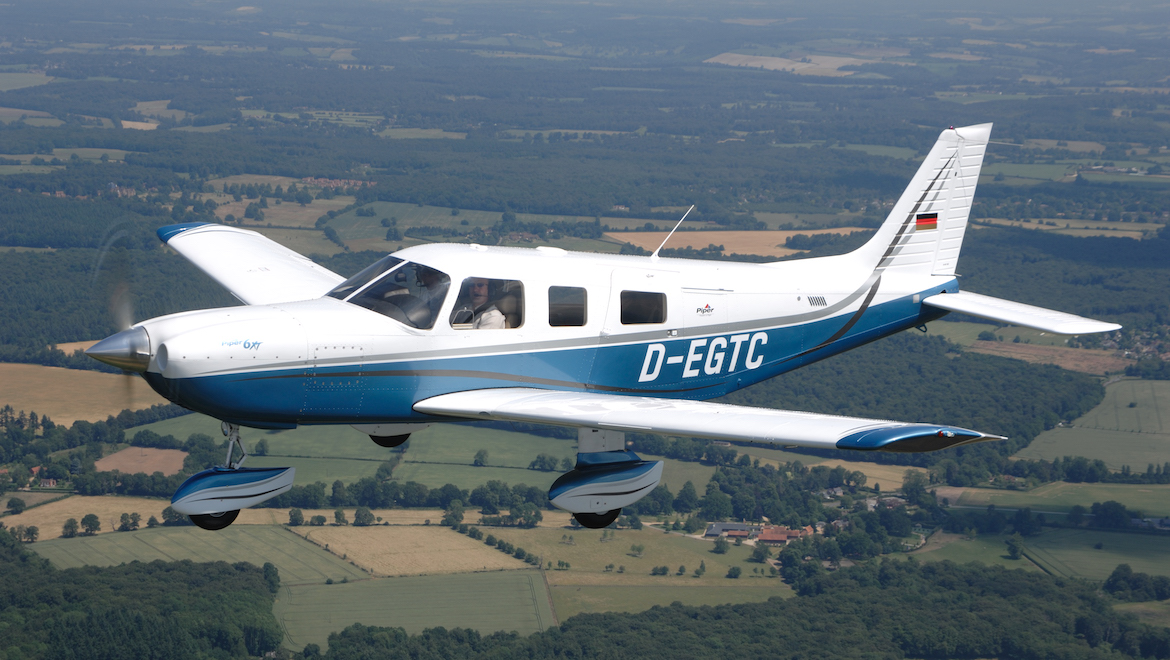
The Cherokee 6XT was the last incarnation of Piper’s popular and long-lived six-seat single which first appeared in 1963.
Essentially, the 6XT is a turbocharged Cherokee 6X. In production between 2003 and late 2007, both aircraft came with the option of flat screens, as fitted to the 6XT in this flight test.
On the day of this airtest there was a 1975 Cherokee Six parked nearby, enabling me to compare the old and new. One change was cosmetic – the ‘Cherokee 6XT’ badge on the fuselage has the ‘XT’ sprayed on in large lettering.
The 1975 model – like the Saratoga, which is essentially a Cherokee Six with retractable undercarriage – has one more pair of windows at the rear of the cabin than the 6XT. Losing that rearmost pair of windows might have been a retrograde step, but the front end was considerably improved.
The nose has LoPresti cowlings, which refine cooling and reduce drag. The landing light is mounted on the front gear leg instead of recessed into the nose cowling. The nosewheel is steerable through the rudder pedals, so you steer the light with the aeroplane. The main gear has improved spats, which cover the wheel axle and gear leg in a way similar to the Robin DR400, whereas older models just had faired main wheels with exposed legs.
The 6XT wing was another improvement – it has tapered outer panels, whereas the seventies aircraft has the single chord “Hershey bar” wing of the original 1960s Cherokees. Different wings mean different fuel tanks – the old Cherokee Six has two tanks per wing, the outers being integral tip-tanks contributing to a total capacity of 318 litres.
Plenty of pilots have got themselves into tank selection trouble with this system, and more recent Cherokee 6s are simpler and more foolproof. The new model has two large tanks with just one filler point on each wing and modern, flush fitting caps, and a simple fuel selector in the cockpit. There are also manual fuel gauges atop the wing (though these were obliterated by internal condensation on the demonstrator). Total fuel onboard is 386 litres.
At the back end is the familiar all-flying tailplane. The theory behind this is that the whole tail can be deflected to provide pitch trim with less drag than a traditional fixed tailplane and movable elevator. It must work in practice because super efficient jet airliners use a similar system.
Overall, it’s quite obvious that Piper improved the aerodynamics of the Cherokee 6, and in fact the cruise speed is now listed as an impressive 161kt, albeit at 10,000ft. Not bad for a six-seater with 300hp (225kW). But inside is where the biggest differences can be seen.
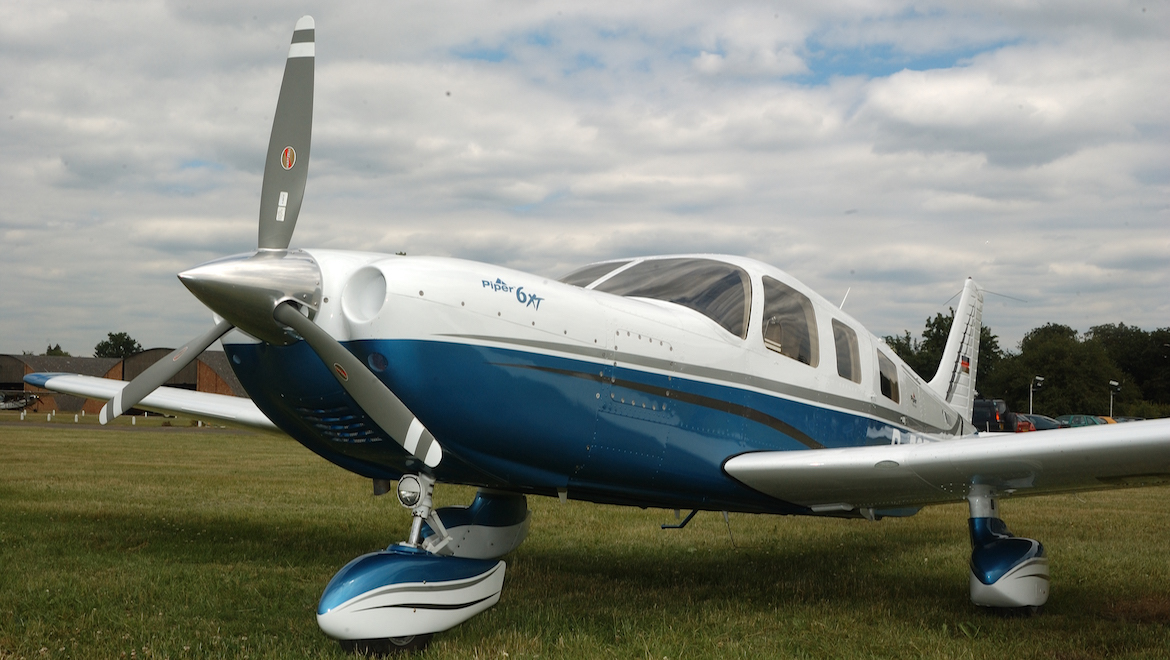
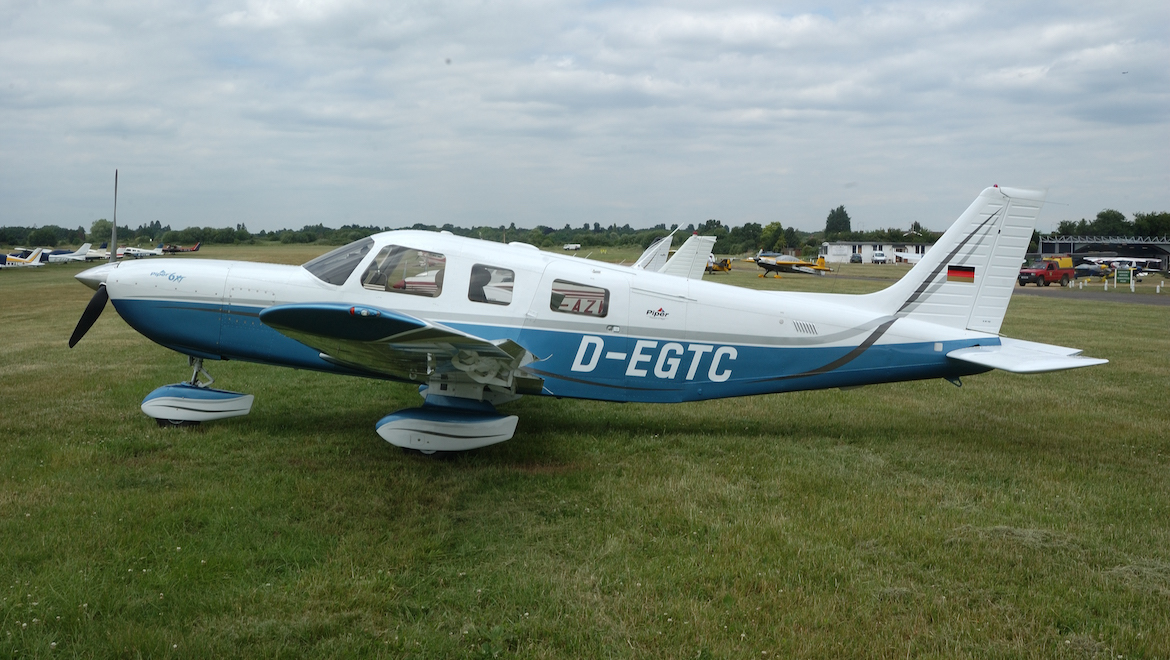
The cabin is in the increasingly popular club layout, the two middle seats reversed to make essentially a cabin within a cabin, with its own door on the left side. The luggage door opens to the rear of the cabin door, making an even bigger space. This is very popular with parachute clubs – the phrase ‘club seating’ taking on a whole new meaning. Another baggage space is available in the nose. The cockpit door is on the right hand side, just like most Piper ‘Indians’.
The cockpit is dominated by the massive Avidyne screens, rendering much of the panel in which they are fitted as redundant space. The feeling is the same as in a modern airliner, with large areas of bare panel around the screens.
Three features combine to make the cockpit feel rather special – there is a proper throttle/prop/mixture quadrant instead of plungers, the top of the main panel’s instrument screen has been raised slightly to fit an annunciator panel, and the electrical switches and engine start controls are mounted in the roof space just above the windscreens.
This Cherokee feels more like a grown up aeroplane than the competition, and compared to many of its little brothers.
Conversely, on the floor between the seats is a reminder of the smaller Pipers from which the 6XT derives – a big flap lever. The Warrior, Arrow and Seminole all have this old fashioned way to set flaps. I know that some aviation journalists favour it over an electrical system, but in my opinion Piper should have gotten rid of the manual lever. If it wanted a common system it should be an electric flap actuator like the Saratoga. You wouldn’t buy a new car and expect to have wind-up windows and a manual sunroof.
The control wheels are typical, meaty Cherokee designs, fitted with an electric elevator trimmer. A backup manual trimwheel is mounted between the seats and falls easily to hand.
In theory, engine starting is simply a case of priming the big injected and turbocharged Lycoming, and then reaching up to the overhead panel to engage the starter motor using a push button rather than the classic ignition key – as I said before, the Cherokee 6XT has many features in common with larger aeroplanes.
On the test day, our aircraft didn’t immediately want to start for me, but after four attempts she burst into life. It wasn’t a fault with the aeroplane – hot injected engines on very hot days are notoriously difficult to start. This aircraft’s starting ‘sweet spot’ turned out to be half throttle and mixture to lean until she fired, afterwards bringing the mixture up to rich, nice and slow, before closing the throttle.
With the generator online, the Avidyne Entegra screens illuminated, and I was intrigued to see how they looked and worked. My first impressions were that the image density isn’t as high as the CRT screens I have in the Airbus A320 I fly or the LCD screens in the Boeing 737-700 I used to fly, but the Avidyne system doesn’t cost hundreds of thousands of dollars. The Avidyne screens are more television-like, but impressive nevertheless.
The engine gauge representations on the right hand screen were quite slow, and I found that to set an rpm accurately I had to move the throttle an approximate amount, then wait for the gauge to catch up and then move it some more, rather than use the gauge in real time. The horizon display was good and the map display was amazing, far better than anything I have seen in airline cockpits.
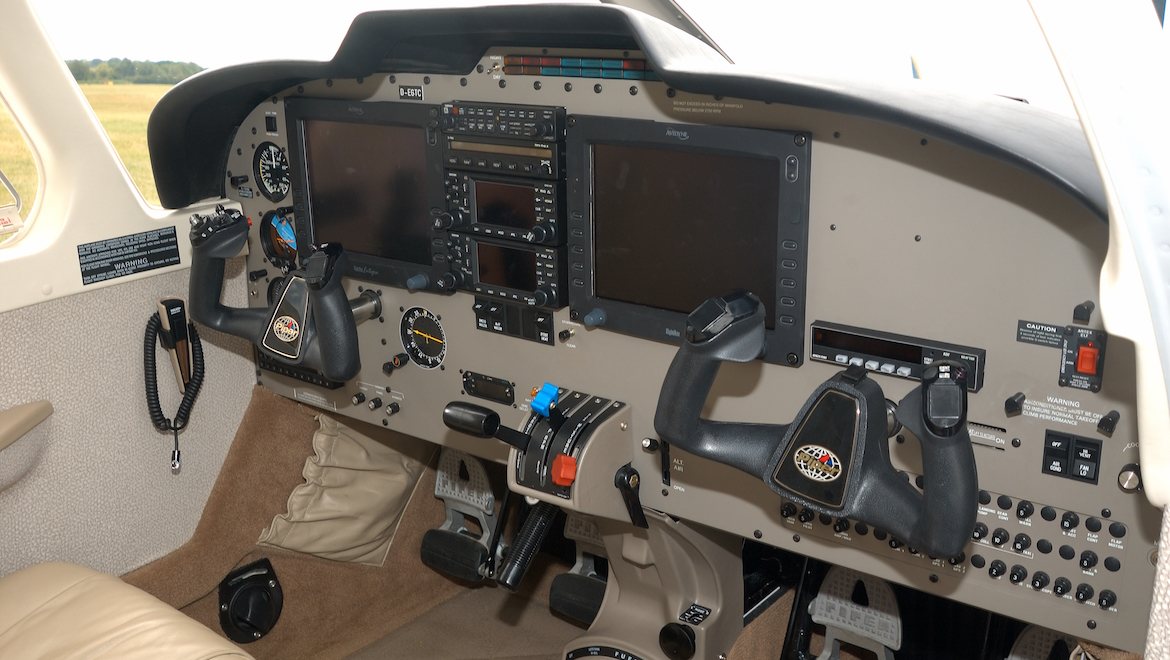
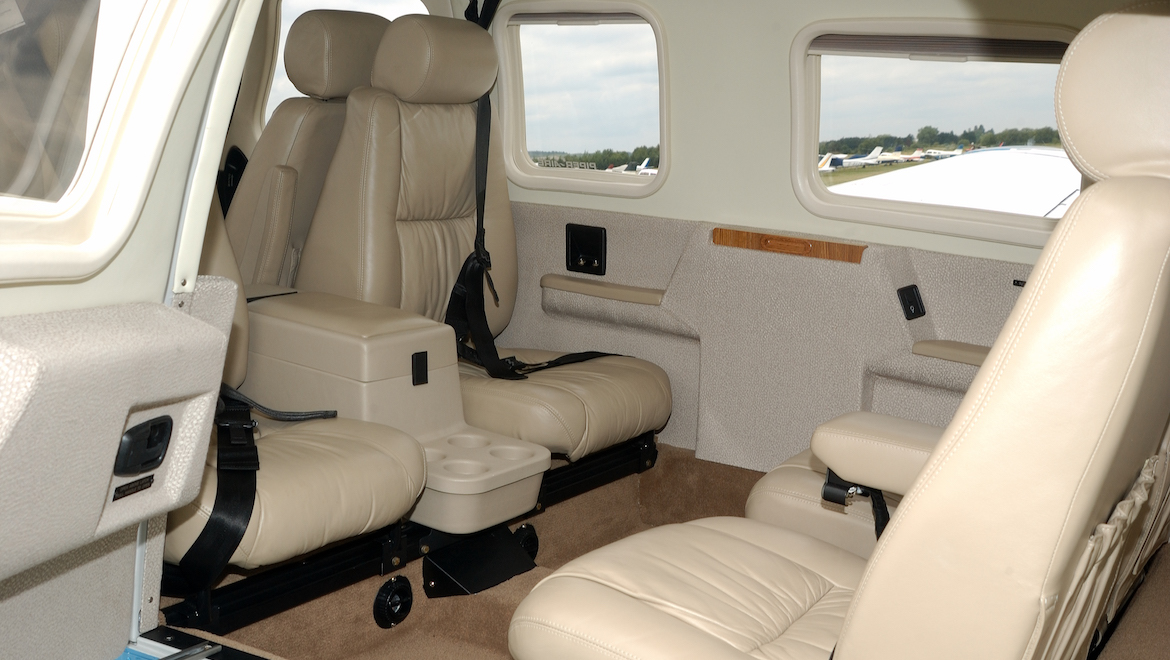
Handling a big bird
With the engine warmed up, we taxied across White Waltham’s grass to Runway 03. The aircraft was easy to handle, the rudder pedals firm but not heavy, and there was no tendency for me to inadvertently operate the toe brakes.
We were at mid weight with half tanks and three POB. A typical 6XT has just over 590kg useful load, so with six 80kg adults the aircraft would be limited to 110kg of fuel, for just over three hours of endurance. At the other end of the scale, full fuel of 385 litres would leave room for four adults and give a range of over 900nm.
After rudimentary pre-takeoff checks we lined up and I opened the throttle. The big, six pot Lycoming made a satisfying growl as we bounced down the grass runway, the yoke lightening as that heavy tailplane became energised by the air and propwash flowing across it – the rudder pedal forces also lightened. At 65kt, I raised the nose with a firm pull and the Cherokee clawed its way into the sky after a takeoff roll of approximately 400m in light winds and a temperature of 24°C.
We had used one stage of flap and I raised it at 500ft with no discernable sink but a noticeable trim change, which I attempted to trim out with the electric rocker on the yoke. At first I didn’t think it was working, but then I could sense the pitch change. The electric trim is far too slow and couldn’t keep up with my combination of flap retraction and acceleration. I resorted to using the manual trim and didn’t use the electric trim for the remainder of the flight.
The 6XT feels very different in pitch to its smaller family members and takes a little getting used to. I found myself porpoising on occasion but later on I settled down and relaxed my efforts, allowing the aircraft time to react to a pitch input before I made the next one. In terms of control force and airframe inertia, the 6XT feels much bigger than it is.
Nevertheless, because the atmosphere was quite unstable, we were getting tossed around in thermal chop at lower altitudes. At times it was quite uncomfortable. (The air-to-air photography was tougher than usual – when I commented about this to our camera ship pilot, he was surprised, but that’s because he was flying a Yak-52 which has a much higher wing loading.)
My frequent use of the throttle to hold position confused the ‘% power’ indicator on the flat screen and eventually it quit, never to return.
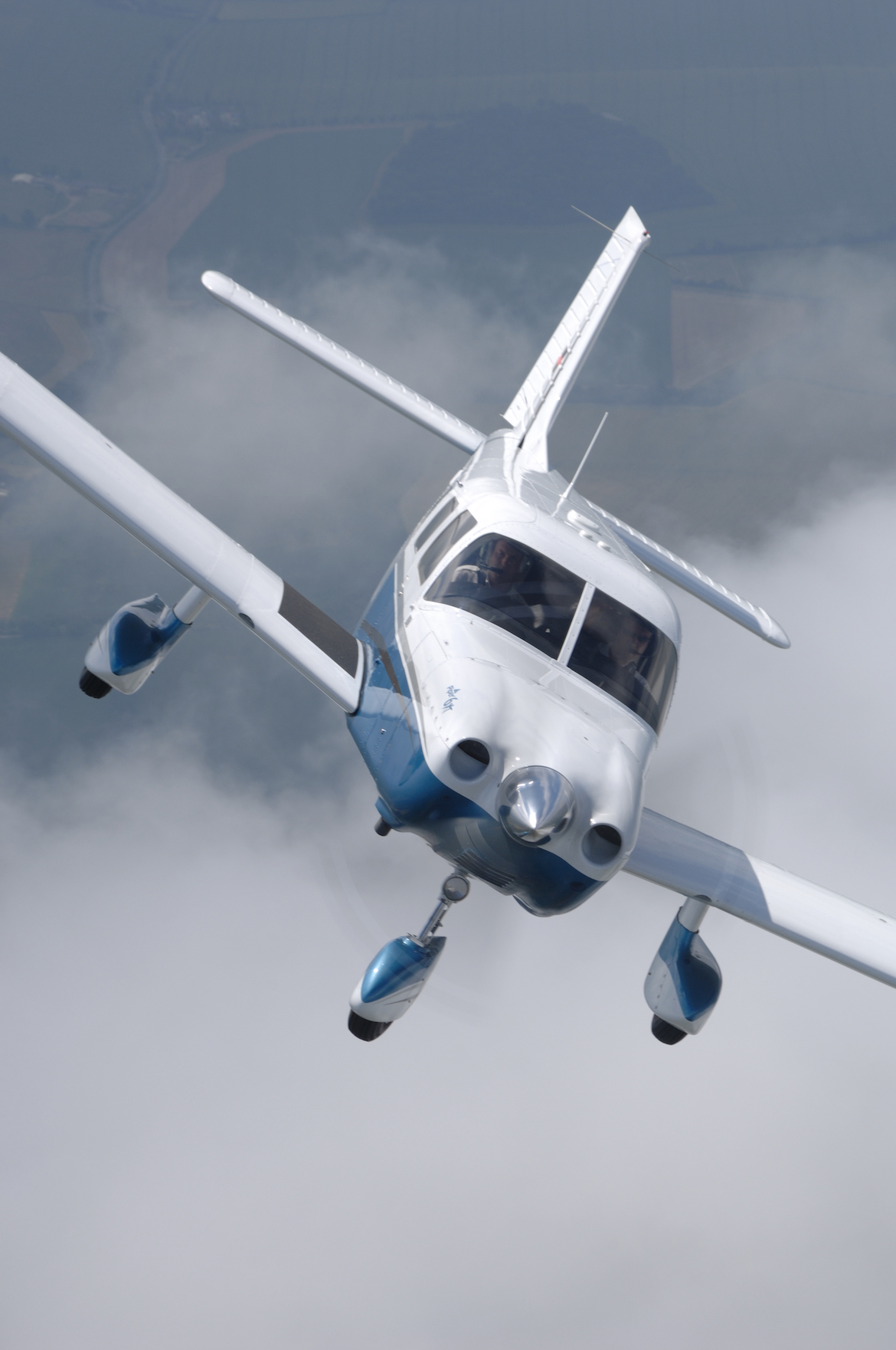
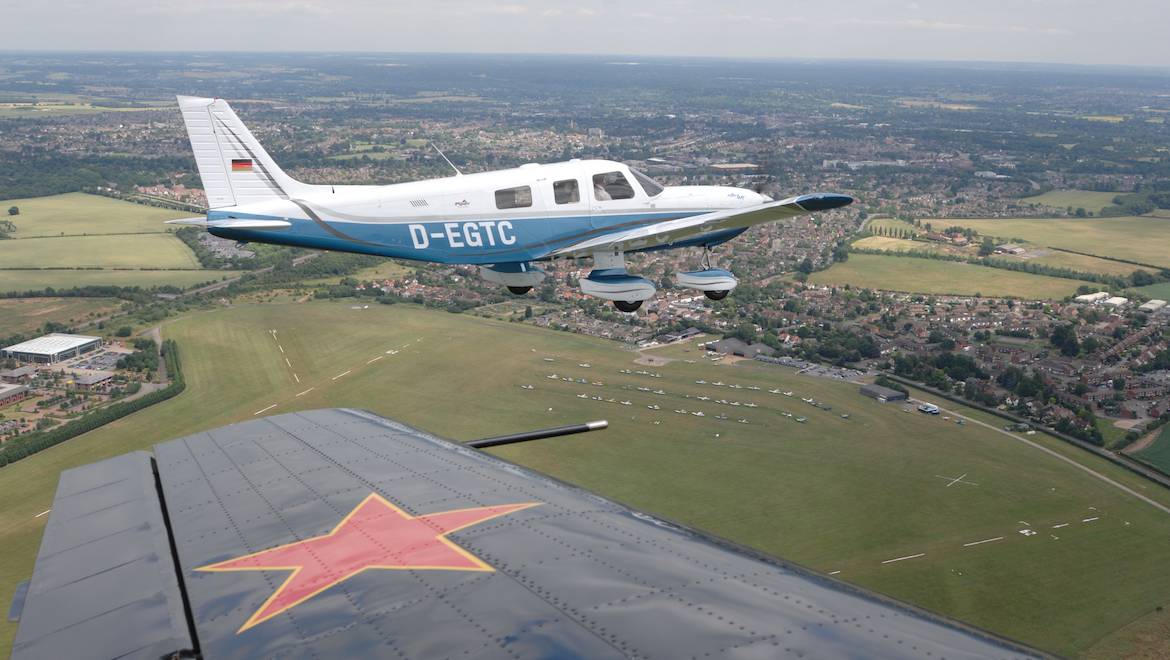
With the photography complete, I opened up to full power and climbed to find some smooth air. At 5000ft we levelled off and I kept the throttle wide open, eventually recording a speed of 155kt IAS which trued out at 170kt TAS – which is pretty quick. Cruise power gave 160kt TAS. The controls remained stable in all axes, and away from turbulence she was actually quite easy to fly.
I removed my headset and found that the cockpit was quieter than average, the rear cabin even more so according to our passenger. My chaperone Toby demonstrated the integration of the autopilot and Avidyne navigation system, which was superb. The workload had suddenly dropped almost to zero – I found myself transported into another flying environment and I could enjoy travelling on an extended trip in this aeroplane. An entertainment system for the rear cabin would be an asset, while the pilots in the front could entertain themselves with all the knobs and functions on the Avidyne system.
At the low speed end of the envelope, the 6XT displayed impeccable manners – no amount of heaving and shoving on the controls from me could induce anything approaching a departure from controlled flight, the aircraft shrugging off my efforts like an unusually elegant hippopotamus trying to get rid of a tick.
The stall itself was benign in all configurations, and the lowest number we recorded was 50kt with full flap and a handful of engine power. In all cases the 6XT settled into a wings level moderate sink with a gentle pitch oscillation which didn’t threaten to develop into anything more violent. A gentle easing of the stick brought each stall to an end.
I tried a high speed dive at full power – the constant speed prop kept up with the engine but the electric engine rpm gauge didn’t. The ailerons firmed up dramatically as we approached Vne with a very distinct increase in cabin noise providing an additional cue for an unwary pilot.
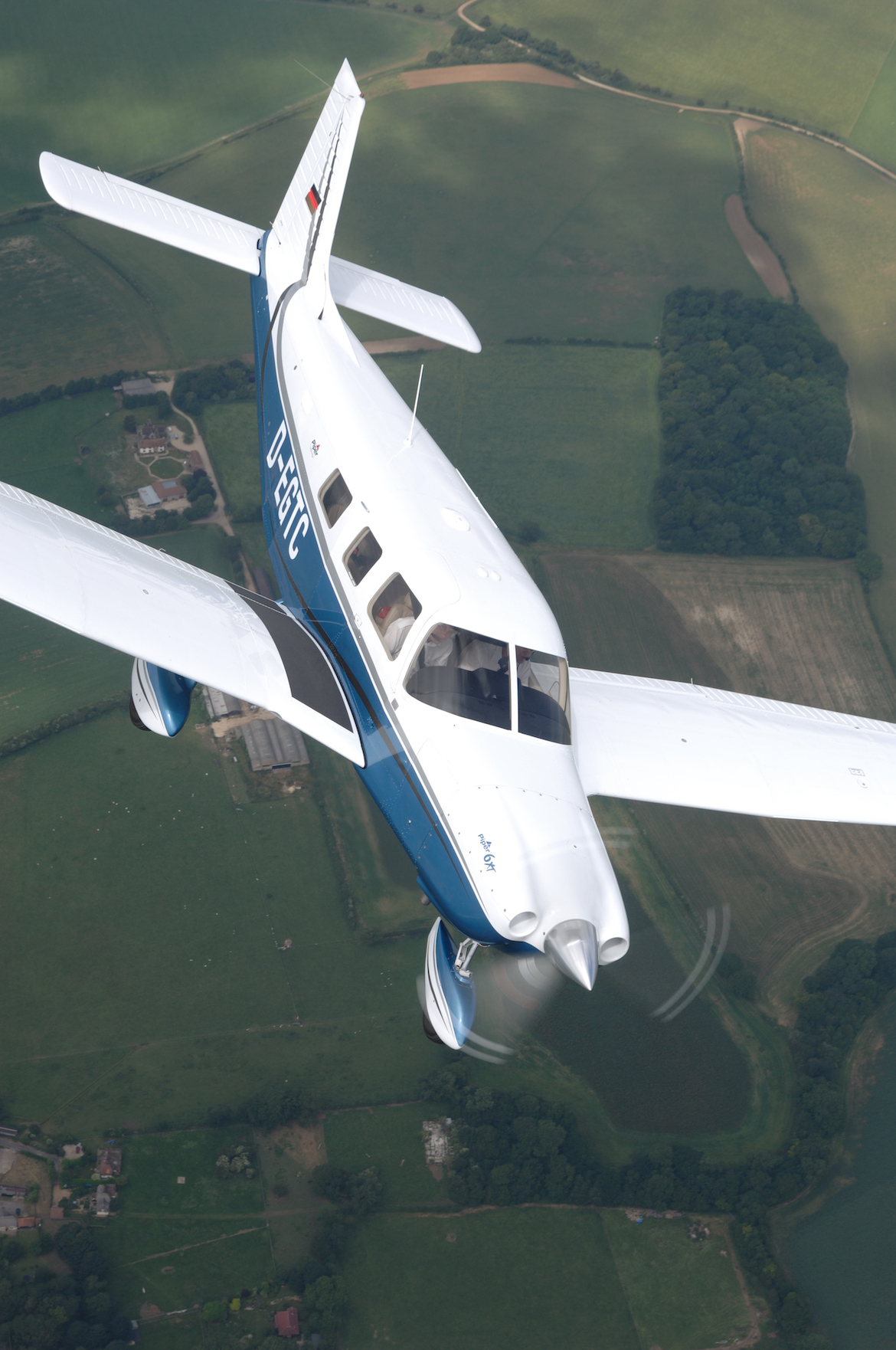
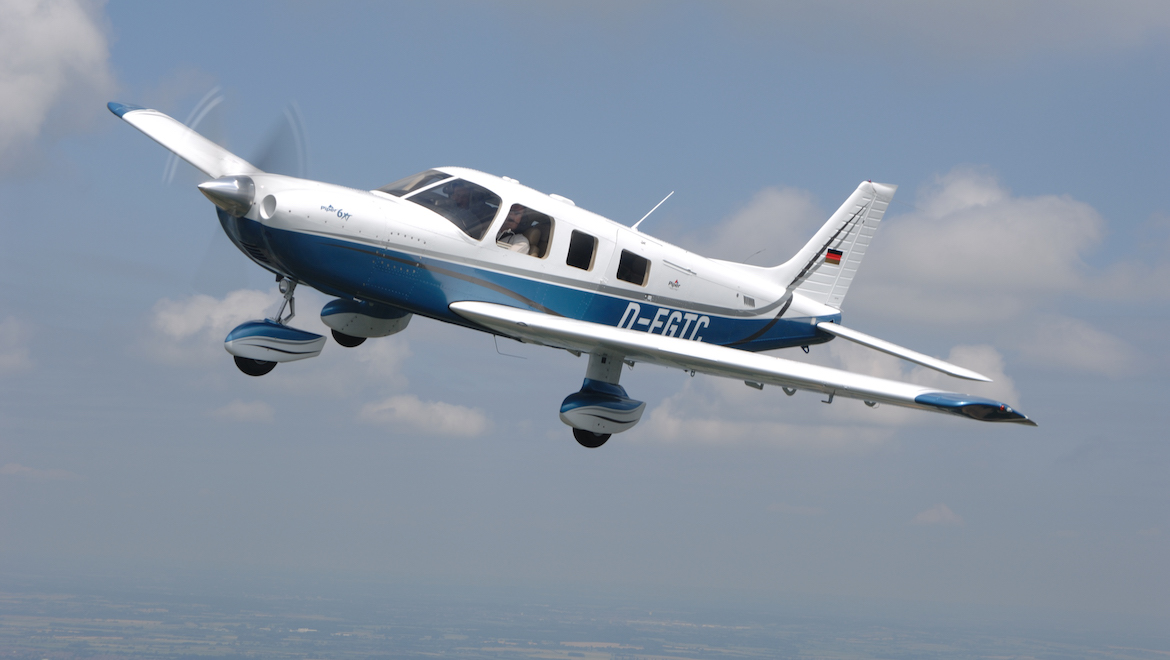
Heading back to land
Back towards the circuit, I started with a hot descent on the deadside at 150kt, slowing to 100kt downwind and 80 on final. Since the gear is already down and the flap limits are generous, no pilot should find this aircraft difficult to handle energy-wise.
Handling at the touchdown is more challenging. The technique isn’t the same as required for the little Cherokees and Warriors – care must be taken not to get into a high sink rate, nor pilot induced oscillation on the roundout. Trim is also important, as if the aircraft is at the forward C of G limit there can be a tendency to run short of pitch in the flare. I managed a nice touchdown, but I was distinctly aware that this machine represents a raising of the game compared to the four-seaters.
Once on the ground, it would be difficult to get into trouble, the rudder pedals being nicely responsive and the brakes powerful without burying the nose into the ground.
While I was writing this story, trying to keep myself and my ancient computer cool in the clubhouse on one of Britain’s hottest day for 100 years, I watched a newish Cherokee Six arrive and park on the grass. What looked like an entire family was in the aircraft – an older man (the pilot), possibly his son and daughter-in-law, their two children, three large suitcases, a picnic hamper and a car seat.
That’s a lot to put into an aeroplane (I’m referring to the human investment as well as the weight and volume), and it says a lot about the reputation of the good old Cherokee Six, ‘XT’ sprayed on in large lettering or not.
VIDEO: A look at the 50th anniversary of the Piper Cherokee that was reached in 2010 from the Piper Aircraft YouTube channel.
This article originally appeared in the January/February 2012 edition of Australian Aviation. To read more stories like this, become a member of Australian Aviation here.













